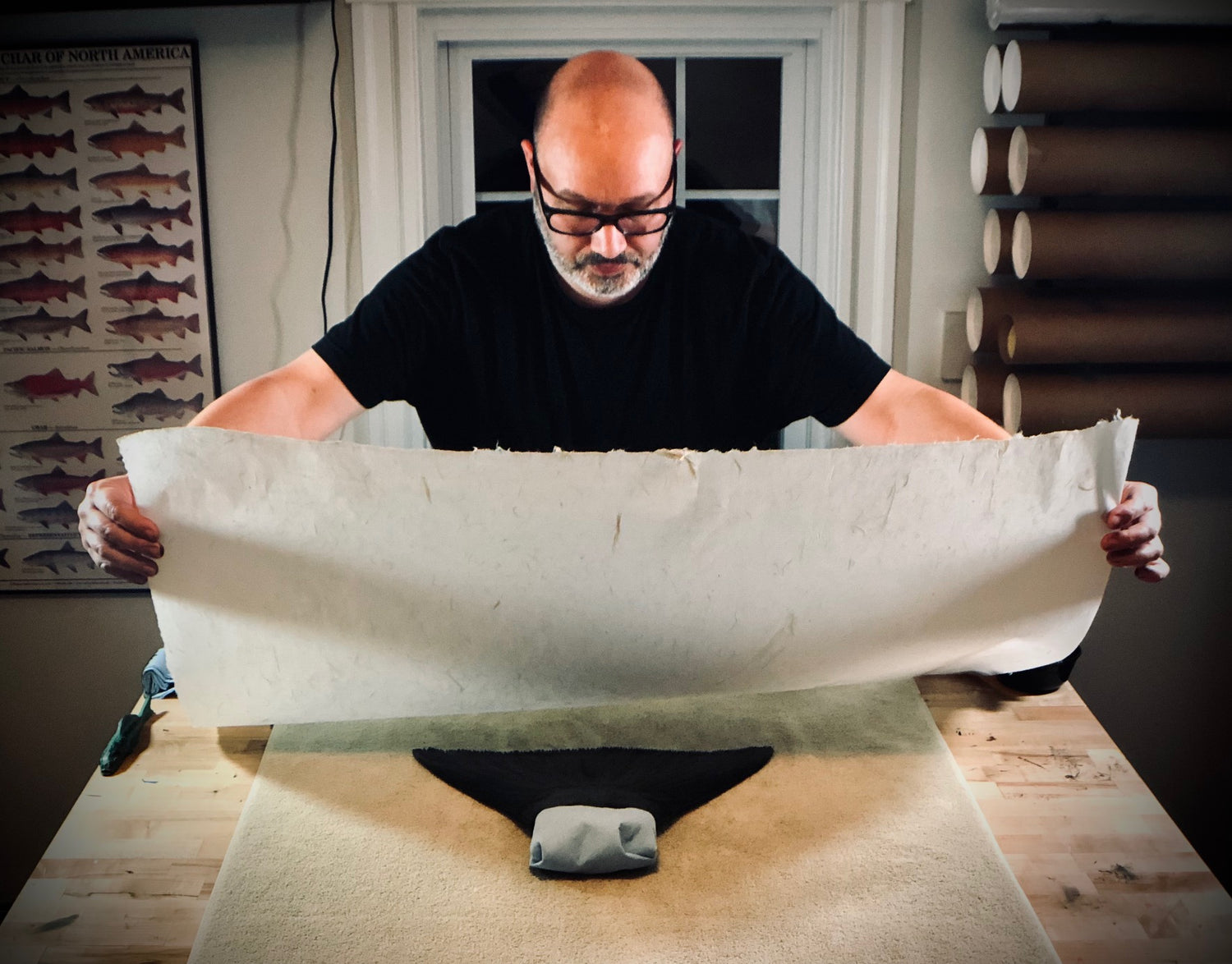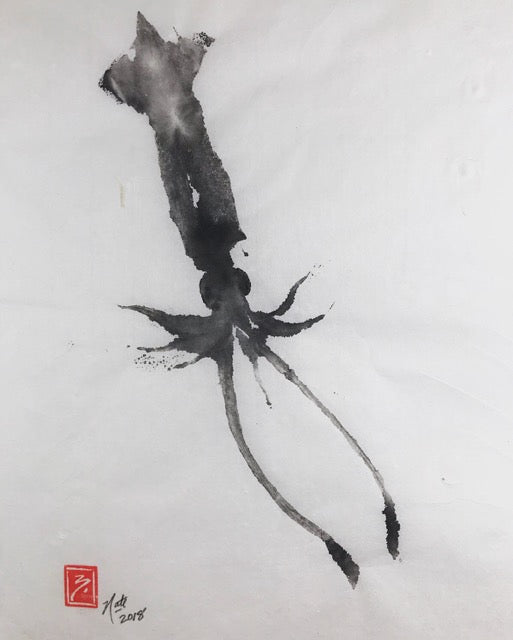
About the artist...
Nate Garrett is a Maine-based artist whose practice is rooted in gyotaku, the traditional Japanese art of fish printing. Nate explores this traditional technique through a contemporary lens, capturing the quiet dignity of aquatic life.
Nate's work is deeply informed by the Japanese aesthetic of "Ma" (間) - the intentional use of negative space as an active, meaningful element. In his compositions, space is not abscence but a deliberate pause that shapes perceptions and invites quiet contemplation. His art encourages viewers to linger within these intervals as much as on the forms themselves.
His minimalist approach and restrained color palette evoke comparisons to Edo-period artist Itō Jakuchū, whose influence can be felt in the detail and spaciousness of his work.
Nate’s work has been shown nationally and internationally, including ‘Kindred Tides,’ a solo exhibition at the Maine Maritime Museum in 2024, and the Awagami International Mini Print Exhibition hosted in Tokushima, Japan. He was recognized as South Portland’s Maker of the Year in 2024, profiled in Down East Magazine’s “Best of Maine” issue 2024, and received a Maine Arts Commission Grant for fiscal year 2026. His work is also on display at the Japanese Consulate in Boston Massachusetts.

Artist's CV
Awards/Honors
Maine Arts Commission Grant 2026
South Portland Maker of the Year 2024
Exhibitions/Display
Japanese Consulate, Boston 2025 (ongoing)
Maine Maritime Museum, Bath 2024
Japanese Paper Museum, Tokushima 2023
Instructor
Snow Farm School of Craft 2026
Nantucket Historical Association 2026, 2025, 2024
Nature Printing Society 2024, 2021, 2020, 2019
Lectures/Demonstrations
Walk the Working Waterfront 2026, 2025, 2024
Casco Bay Bluefin Bonanza 2026, 2025, 2024, 2023
Japanese Consulate, Boston 2025
Maine Coast Fishermen’s Association 2025
Japan Festival Boston 2025
Bowdoin College 2025
Maine College of Art and Design 2024
Maine Maritime Museum 2024
Maine State Aquarium 2023
Boothbay Harbor Tuna Challenge 2023
Gulf of Maine Research Institute 2023, 2022
Japan Society of Boston 2022
Media/Press
Featured Artist, American Frame Inc 2025
Down East Magazine, “Best of Maine” 2024
TV Tokyo Sekai ga Odoroita Nippon! 2023